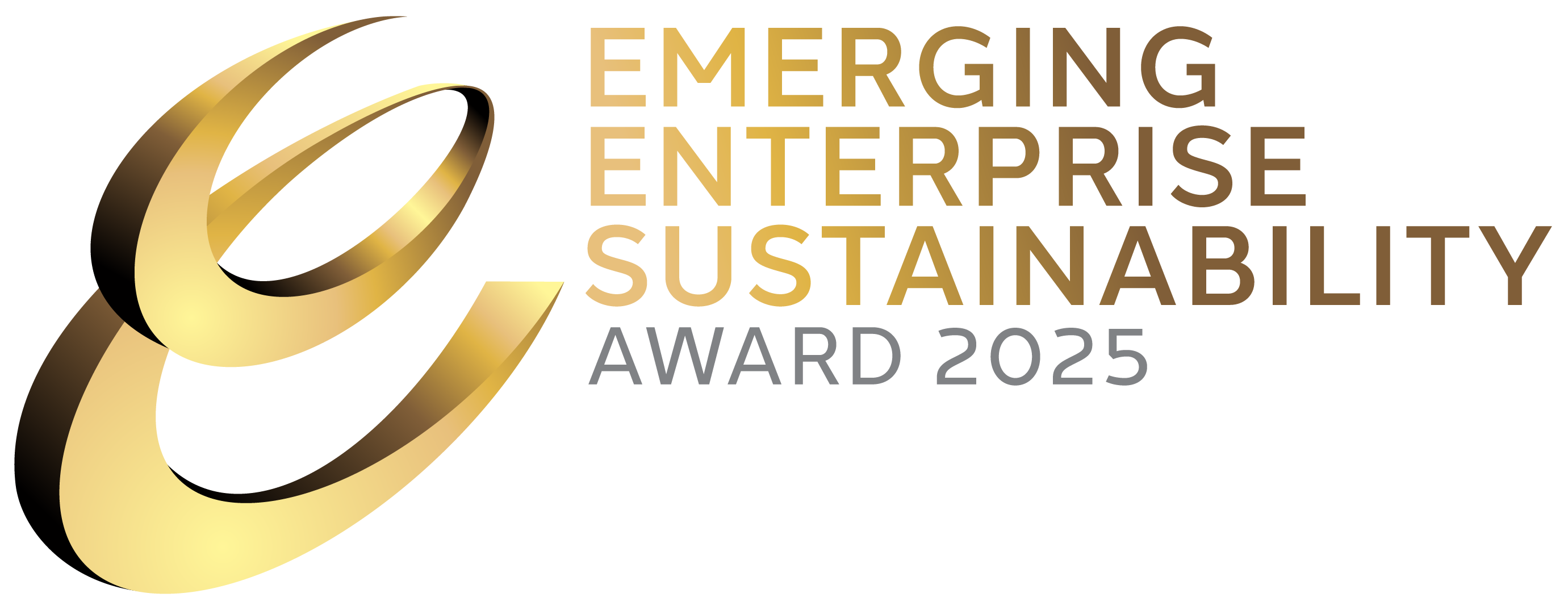[SINGAPORE] Beyond offering sustainable products, these five companies show how green practices can be embedded into business operations.
For some of these founders, the sustainability journey has personal origins: one has a grandmother whose quality of life was affected by a neighbouring restaurant’s fumes, while another was deeply influenced by severe transboundary haze in the early 2010s.
Others felt their technical expertise could help fix critical gaps that industries face on the way to net-zero emissions.
Their companies are among the finalists of the Emerging Enterprise Sustainability Awards (EESA), introduced in 2023 to recognise small and medium-sized enterprises driving growth in the green economy.
EESA is part of the wider Emerging Enterprise Awards launched in 2008 to celebrate startups and young businesses across Singapore and Asia, providing resources to boost their growth.
This year’s awards are co-presented by The Business Times and OCBC, and supported by Mastercard; Rajah & Tann Asia; RSM Singapore; Agency for Science, Technology and Research; Enterprise Singapore; and Paia by CBRE.
Harnessing light to improve air quality
Albacastor Technology’s products reduce odours and pollutants while staying sustainable

Albacastor Technology develops breakthrough air pollutant treatment technologies to solve odour challenges.
At first, we focused on cooking emissions from restaurants. My grandmother, who lives above a restaurant specialising in spicy cuisine, could not open the windows freely or hang her laundry outside. As an engineering graduate, I wanted to do something to help her.
I patented a metal-doped photocatalyst technology that allows hydroxyl radicals – strong oxidising agents that decompose odours and air pollutants – to be generated more efficiently.
This technology has been integrated into our flagship UVent Smart Ventilation System, which also uses ultraviolet-C technology.
Over about five years of research and development (R&D), we evolved to address various odours, including from grease traps, sewage systems, garbage rooms and toilets. This has allowed us to expand our target customer base to property management companies, construction firms and even developers.
We integrated sustainability into our business from day one, and our flagship product is one of the greenest devices of its kind on the market.
We save up to 90,000 litres of water and 3,900 kilowatt-hours of electricity per device per year, which translates to operational cost savings of about US$6,500 per device annually.
We also provide environmental, social and governance data to our clients through our Internet of Things (IoT) platform. Our device has a recycling rate of up to 85 per cent, as verified by Colliers.
Our long-term vision is to redefine light as a valuable resource for improving air quality.
We plan to expand our product offerings and apply this patent to coatings and textile applications. Imagine a wall coated with paint using our patented technology; it is not just a normal wall, but also a device that enhances air quality.
Looking ahead, we have two paths toward a more sustainable approach. Apart from expanding our product range, we also plan to reuse parts such as casings for new devices. We believe our products could represent the next level of sustainability.
Helping solar panels last longer
EtaVolt is working towards a closed-loop value chain with its regeneration technology

At EtaVolt, our technology extends the lifespan of solar panels. We create and commercialise proprietary regeneration and recycling technologies that help to recover valuable materials and enable a closed-loop solar value chain.
EtaVolt began as a spinoff from the Nanyang Technological University, where we saw a critical gap in the renewable industry: Despite rapid adoption of solar energy, little attention was given to what happens at the end of a panel’s life.
Our patented regeneration technology uses intense light to re-energise and repair solar cells, recovering up to 5 per cent of efficiency within minutes. This can minimise further degradation of the solar cells for up to five years.
Our solar recycling line is designed as a self-contained pod, making it compact, efficient and transportable. This allows for quick set-up and easy deployment.
Our technology was featured under the SolarNova programme by the Housing & Development Board and Economic Development Board; to date, we have delivered two recycling lines to local e-waste companies.
While Singapore remains our main market, we are expanding across South-east Asia, Japan, South Korea, Australia and Europe through strategic partnerships and business missions.
Beyond our hardware solutions, we are developing digital platforms such as EtaGen and EtaTune, which enable asset owners to assess system health, plan for end-of-life management and evaluate new project feasibility.
As a startup, we’ve encountered various challenges, particularly in the early stages of test-bed validation and commercial trials. Instead of viewing setbacks as obstacles, we treated them as catalysts for improvement. Through continuous iteration, we refined our engineering processes, tightened quality control and enhanced performance.
We also redefined our business model for stronger commercial scalability and long-term sustainability. This includes moving towards an intellectual property (IP)-based model with our proprietary technology as a core value driver, strengthening both our market positioning and revenue resilience.
Our long-term vision is to integrate EtaVolt’s technologies and IP-based solutions into a circular ecosystem that redefines solar sustainability.
We aim to deliver a comprehensive solution that integrates technology across every phase of the solar system, from deployment to operation and end-of-life recovery.
Giving buildings a “master brain”
Zealcorp integrates multiple technologies and IoT platforms into a unified data-centric ecosystem

Zealcorps designs, develops, and implements building management systems, energy optimisation and industrial automation solutions. Driven by artificial intelligence (AI), these systems enhance operational efficiency, sustainability and workplace safety.
This idea was born from years of experience in building automation projects, where we saw a growing need for smarter, data-driven systems that go beyond conventional control.
We wanted to redefine how buildings and industries operate, through an integrated AI-based approach that connects buildings, people and data into one intelligent ecosystem.
Unlike traditional system integrators, our approach focuses not only on automation control, but also on energy intelligence, predictive maintenance and sustainability insights.
We integrate multiple technologies and IoT platforms into a unified data-centric ecosystem. This ensures our clients’ facilities are not just automated, but also continuously learning and improving, for greater efficiency and carbon reduction.
Our solutions reduce energy waste, optimise equipment performance and lower carbon emissions across commercial and industrial facilities.
We are currently expanding into data centres, defence, transport systems and semiconductor manufacturing, while deepening our presence in commercial and institutional sectors. Through strategic partnerships, we are developing integrated solutions that support digital transformation, carbon footprint monitoring and real-time energy management for large facilities and industrial plants.
One early challenge was bridging the gap between traditional automation practices and next-generation smart technologies. Many clients were familiar with legacy systems, but hesitant to adopt AI or cloud-based control platforms.
We overcame this by investing heavily in training, R&D and proof-of-concept demonstrations. This helped to show tangible performance improvements and returns on investment, while our hands-on collaboration built client trust.
Over the next three years, Zealcorps will introduce its own AI controller technology, enabling real-time predictive decision-making at the equipment level for both building and industrial applications.
In the next five years, our vision is to establish a centralised AI data pool – the master brain of building intelligence that connects systems, learns continuously and autonomously manages performance across portfolios. This will drive progress toward net-zero efficiency and a sustainable digital future.
Tackling sustainability as an engineering problem
Cobler embeds intelligence into the fabric of buildings for continuous efficiency

Cobler started as a building technology company. Now, we provide AI-driven solutions for truly smart buildings.
The built environment has always been inefficient, as buildings burn 40 per cent more energy than needed. We realised we could deliver value through software by applying core engineering principles we have gained in the field over decades.
We are not software developers pretending to understand buildings. Rather, we are engineers who built these systems for 15 years and are now fixing what’s broken.
The result is an average 25 per cent energy reduction for our clients.
Sustainability isn’t a buzzword for us, but an engineering problem that demands precision, integrity and discipline. It’s about rethinking how buildings actually work, not just adding more sensors or dashboards.
Every solution we deploy must cut waste and grow smarter with time. By embedding intelligence into the fabric of buildings, efficiency becomes continuous, not an afterthought.
What makes us unique is speed and simplicity. We deploy in three months and our AI integrates with what you have and starts delivering value immediately.
Our CobiNeural platform does three things: identify waste, propose solutions and verify results.
The software identifies inefficiencies, calculates the exact savings potential and tracks actual performance against projections. Set your efficiency targets, compliance requirements and budget constraints – CobiNeural handles the rest.
Malaysia remains an attractive market, with the new Energy Efficiency and Conservation Act coming into force. We have expanded to Australia, and Singapore is our next market, followed by the rest of Asia.
When the building technology industry came to a standstill during the Covid-19 pandemic, we used that period to refine our mission to connect human behaviour, energy consumption and environmental impact.
Our vision also became clear: Be the intelligence behind truly smart buildings where sustainability drives profitability.
In the next decade, we believe every building will evolve into a “thinking operating system”. Buildings will not just be an asset, but also active participants in creating a better quality of life.
Inspired by transboundary haze
Green Environmental Engineering creates closed-loop systems where waste becomes a resource

Green Environmental Engineering (GEE) specialises in integrated sustainability solutions across various environmental challenges, including renewable energy integration, wastewater treatment and air pollution.
My inspiration stems from experiencing severe haze in this region, particularly in the early 2010s. The tangible harm to public health and ecosystems ignited my conviction that sustainable development must be the foundation of every engineering project.
What distinguishes GEE is our integrated “circular sustainability” model. Unlike traditional environmental firms with isolated solutions, we create closed-loop systems where waste becomes a resource and energy is continuously harvested.
Our flagship product is our proprietary PureFlux Carbon Capture and Storage System. We use calcium oxide to capture carbon dioxide from gas streams, generating calcium bicarbonate.
This reduces carbon emissions while enabling safe, long-term storage for industries aiming for net zero, such as cement, steel, power and waste incineration.
Beyond our core service delivery, we’ve integrated sustainability into every business dimension. We operate carbon-neutral offices with strict zero-waste policies. We also allocate at least 20 per cent of revenue to environmental research, development initiatives and education programmes.
Our challenges are overcoming deep-seated technological scepticism; substantial initial capital requirements; and recruiting suitable talent.
To tackle scepticism, we demonstrated tangible economic and environmental benefits through pilot projects and with third-party validation.
To address capital constraints, we developed blended finance models incorporating grant co-funding, partnerships with local banks and performance guarantee.
For talent development, we established local training programmes and worked with technical institutions to build a sustainable talent pipeline.
To accelerate impact, we’ve formed strategic partnerships with industrial consortiums and research institutions to deploy our technologies and integrate IoT and blockchain for real-time environmental impact tracking.
We’re also moving into outcome-based contracts to share operational risk with clients and align incentives around measurable sustainability outcomes. This strengthens trust, ensures long-term performance and drives deeper client engagement.
Our vision is to be a trusted partner for sustainable solutions throughout South-east Asia.
Within the next 10 to 15 years, we aspire to be recognised as a leader in delivering lasting environmental and economic impact that improves air quality and accelerates the region’s net-zero goals.







